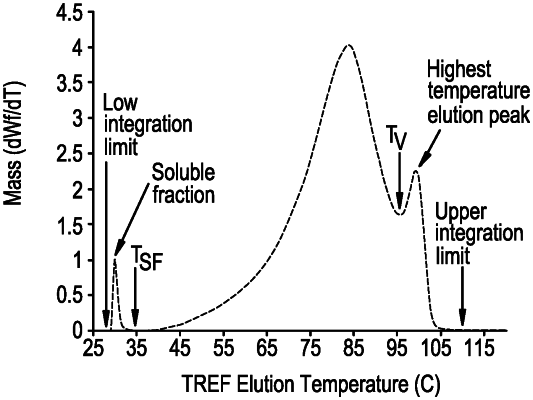| CPC G01N 30/54 (2013.01) [G01N 30/8679 (2013.01); G01N 33/442 (2013.01); G01N 2030/008 (2013.01); G01N 2030/885 (2013.01)] | 12 Claims |

|
1. A method to determine the weight percent of an amorphous fraction in an olefin-based polymer composition, comprising one or more olefin-based polymers;
said method comprising the following steps:
a) dissolving the olefin-based polymer composition in organic solvent to form a polymer solution;
b) injecting at least a portion of the polymer solution onto a support material, and wherein the support material comprises one of the following: a) gold particles, b) gold coated particles, c) particles comprising gold, d) particles comprising a coating comprising gold, e) copper particles, f) copper coated particles, g) particles comprising copper, h) particles comprising a coating comprising copper, or i) a combination thereof;
c) cooling the support material at a rate greater than, or equal to, 0.2° C./min;
d) increasing the temperature of the support material to elute the polymers of the olefin-based polymer composition;
e) generating a chromatogram;
f) determining the peak area of the first elution from its lower integration limit to its upper integration limit;
g) calculating the amorphous fraction based on the following Equation A below:
wt % amorphous fraction=PAamorp/PAtotal×100 (Eqn. A);
wherein PAamorp=peak area of the first elution, and PAtotal=total peak area of the polymers of the olefin-based polymer composition.
|